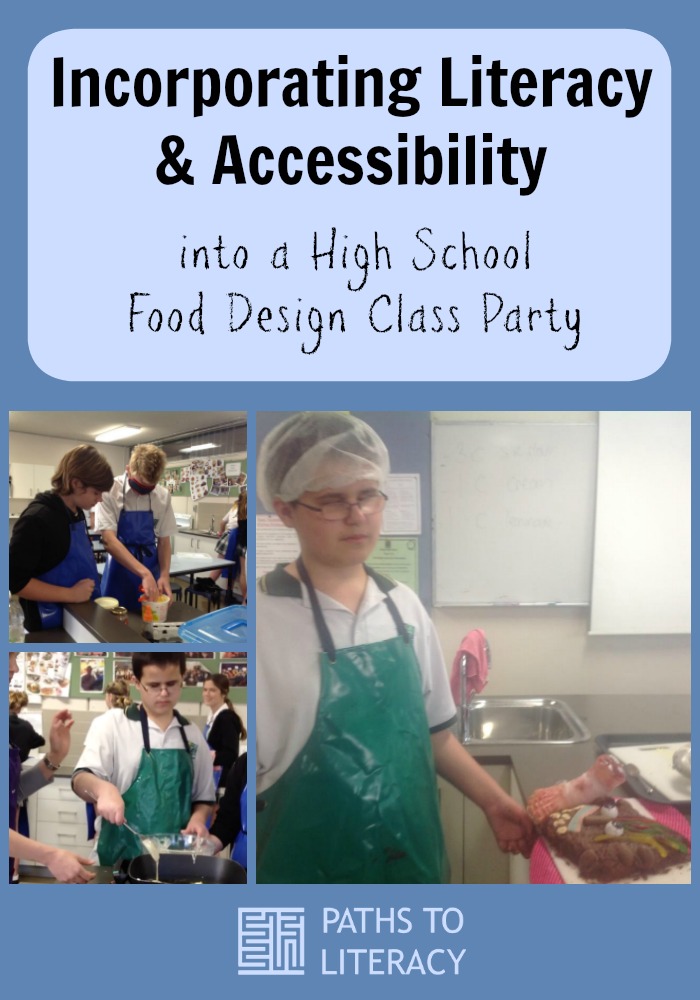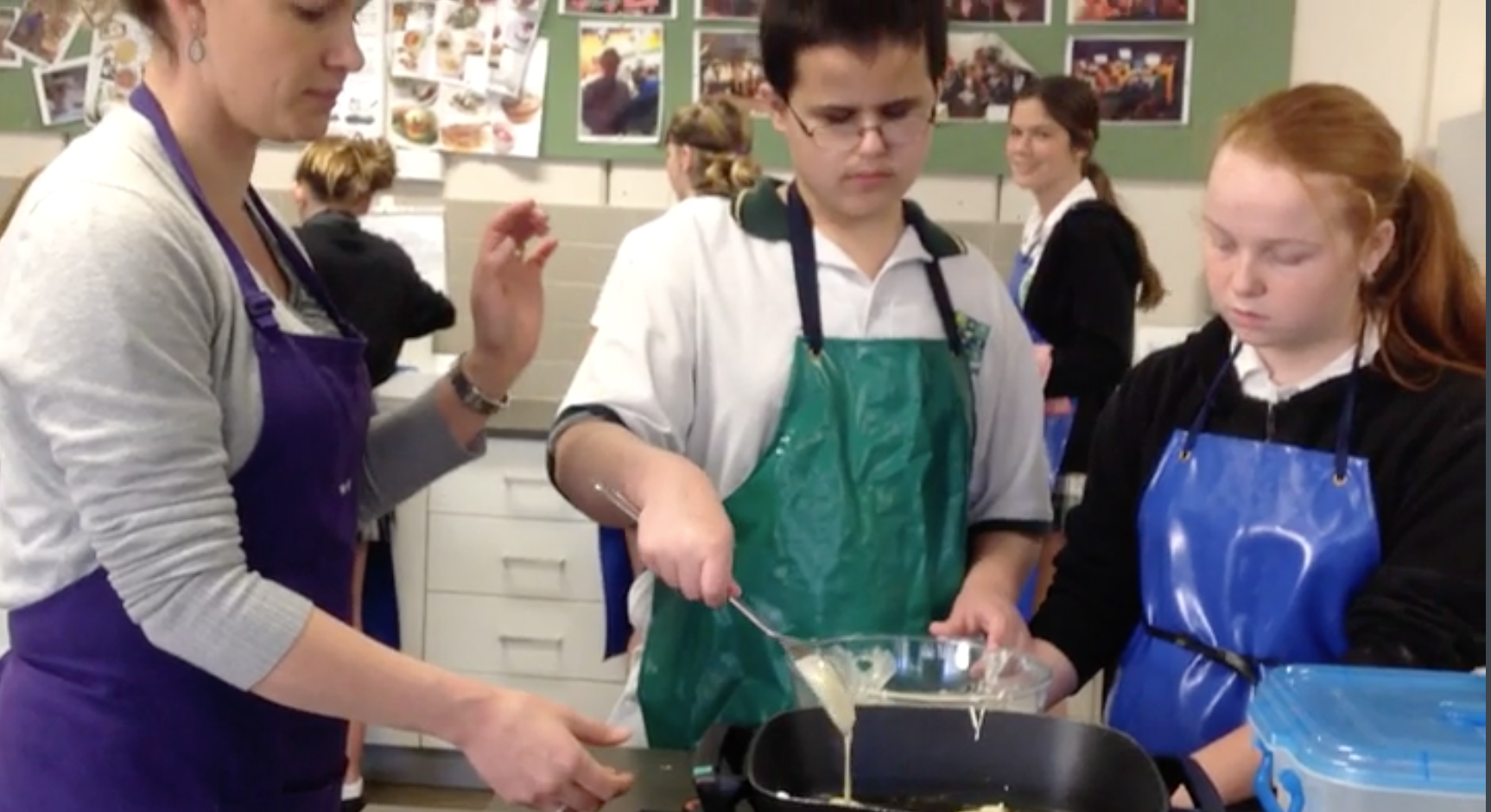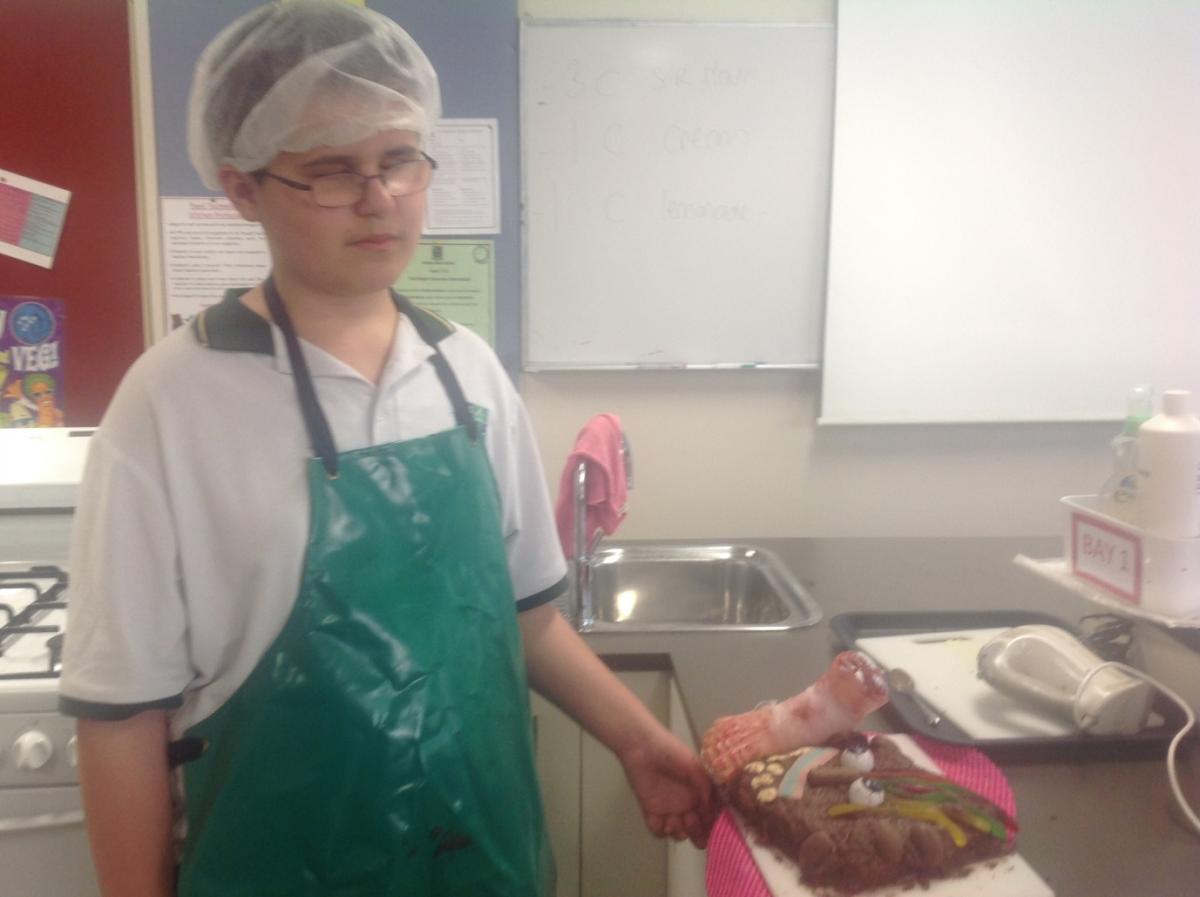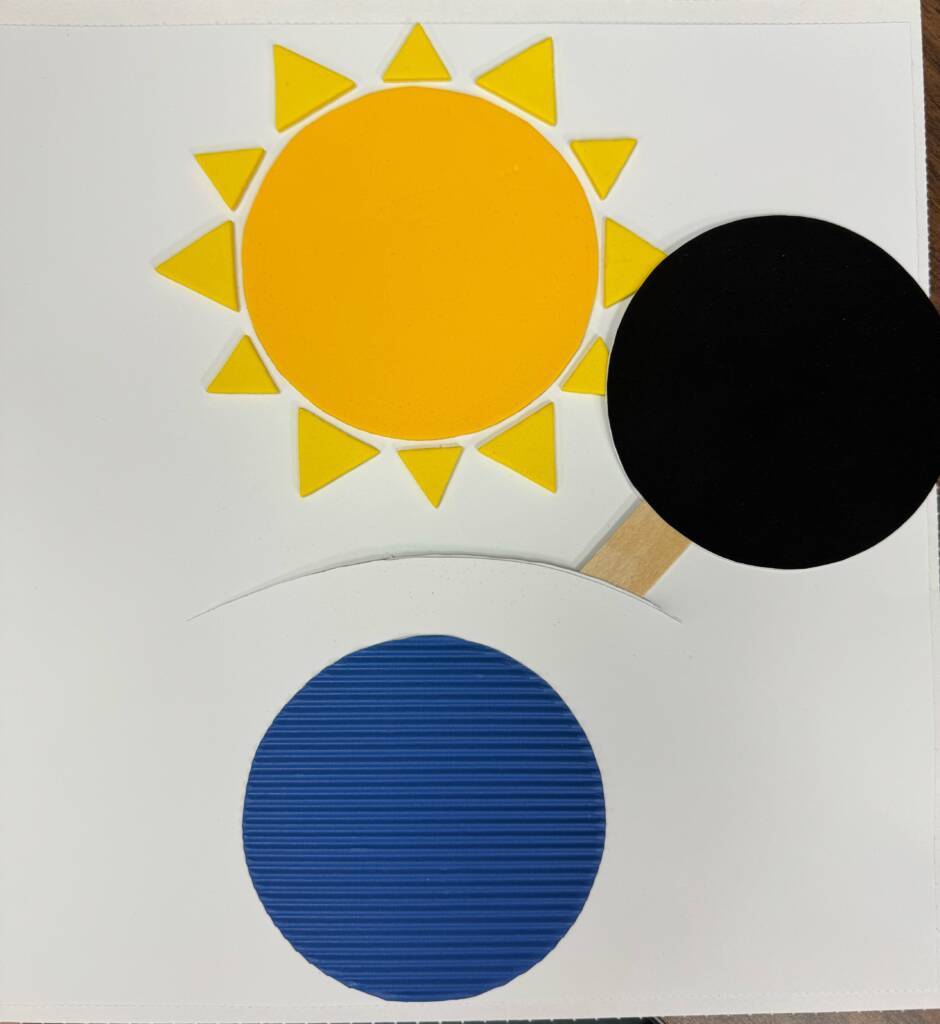Planning a Food Design Party
My student is blind, in year 8 at High School (he’s 14) and had chosen “Food Design” as an elective. It is a one semester course and works towards designing and creating a children’s birthday party. It’s a fun course which is divided between theory, cooking party foods and students planning for their party, creating a portfolio folder including menus, invitations and place cards, and creating their party in class on assessment day. My student chose to do a party with a Monster theme for a 10-year-old boy.
Incorporating Literacy into a Food Design Course
- Practical aspects such as reading recipes, reading contents lists for cupboards and drawers; and creating invitations, menu lists for party. For things like contents lists I provided clear braille labels over existing print lists. For classwork the teacher produced material on USB to be used with a BrailleNote, and the student submitted classwork from his BrailleNote to his teacher on USB.
- Research – finding reading/viewing resources that provide information. Deciding which information best suits the needs of the task. In this aspect the student used his iPhone with accessibility options and took notes either on his BrailleNote or by speaking into the Notes app on his phone.
- Creating own written text for proposals, plan and portfolio. This was done primarily on the BrailleNote but also using Notes on the iPhone.
Course Outcomes
- Practical Application: Demonstrates responsible and safe use of a range of equipment, materials and techniques in practical applications.
- Research Portfolio: Researches, develops and documents information relating to design projects.
- Design: Shows an understanding of the design process and the factors that influence design.
Brainstorming How to Make the Party Accessible
Soon after this, when students were still learning to use the kitchen, thinking about ideas and researching party ideas, an article called 10 Fun Things to Do When Throwing an Accessible Birthday Party! by Liamsmom arrived in my inbox. What great timing! I forwarded it to the class teacher, and in the next class lesson, she showed it to all of the students and held a discussion of how these ideas could be used at their children’s party, and how they might be modified. All of the students were very interested and engaged. Students talked about piñatas, pin the tail on the donkey and modifications of these. Although my student was not a big contributor to the discussions, he clearly enjoyed each time a lesson focussed on blindness. Each time we did something specific to blindness in class, he seemed to walk taller.
As well as this great post about accessible parties, the class teacher and I talked a number of times about how my student might approach the course and the tasks and how we could make the course accessible. While the teacher had never had a student who is blind before, she was very eager to enable him to participate and complete the tasks independently, to gain skills and knowledge. I must say, it has been a joy to work with such a creative and imaginative teacher.
I also sent to all of my students’ teachers some links to Tommy Edison YouTube. Some were specific to subjects, like the film review to English, discussion of colours to art, and riding a roller coaster to Maths (they went on an excursion to a fun park). I find Tommy’s humorous discussions are great starting points for people thinking about how students who are blind might learn. This year teachers took these resources, and others I sent, and ran with them, doing their own research. I have to say it again: it’s been wonderful to work with such a great group of enthusiastic class teachers.
Sighted Students Experience Being Under Blindfold
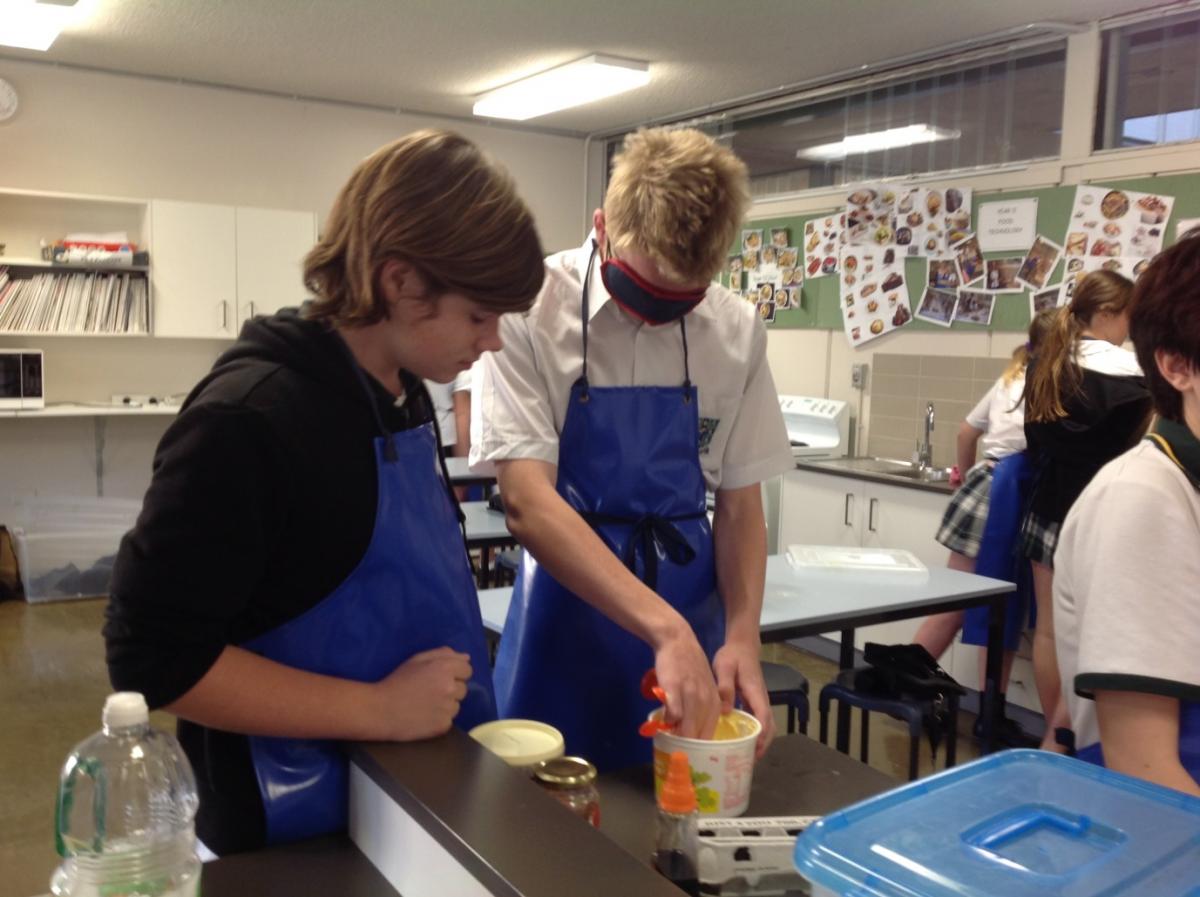
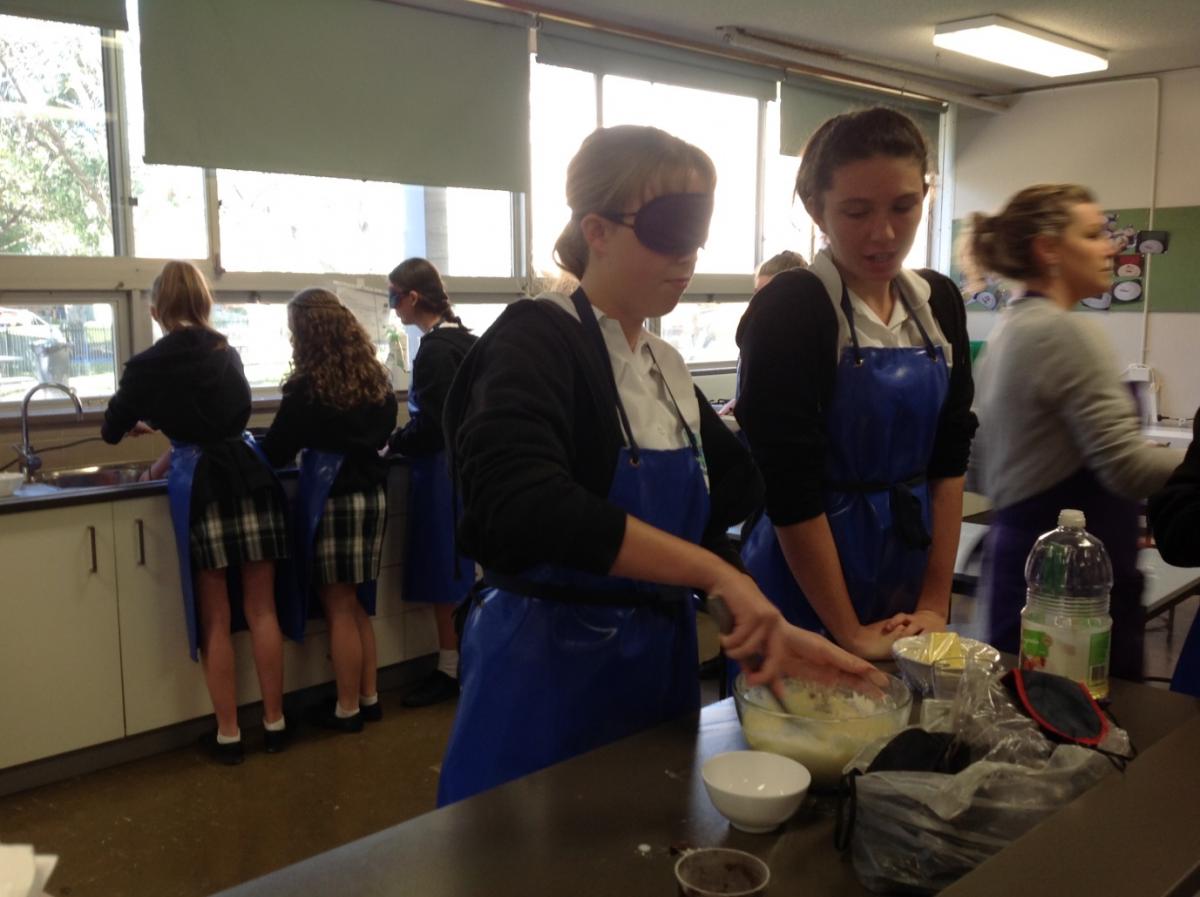
Playing Accessible Games
- Students were asked to put on their blindfolds and then draw a cat. Each student tried hard, including my student who has always used braille, so this was a challenge for him too. When the students took off their blindfolds to see their drawing there was a lot of laughter. I suggested that in the next activity they keep their place in the drawings with their fingers. Then students were asked to replace the blindfolds and draw a car. There was, generally some improvement, but still lots of laughter when they looked at their drawings.
- Students were asked to keep their blindfolds on, not to remove them from then on.
- Students were sitting in groups of four at tables; each table was given something used in the kitchen, like an essence or oil. The bottles had the lid on. The first student took off the lid, smelled the bottle, and passed it to the next. Once they thought they knew what was in the bottle they wrote their answers. There was a great deal of concentration on the task and some interesting problem solving while students thought about how they would pass the bottle to the next person, and how the last person would put the lid on. They enjoyed the experience immensely. It was wonderful for me, as a TVI, to watch their developing understanding and management strategies. It was wonderful for my student to be on an even par, or even at an advantage to his peers (he was still using his BrailleNote to write his answers). After each student had smelled the 6 bottles, students removed their blindfolds to see that they had written their answers randomly over their pages, and one boy had written some of his on the table (oops!). There was some discussion of the smells and what they reminded students of.
- The final activity of the lesson was the game, Ping. Students went out to the playground, put on their blindfolds and played the game with great gusto. There was a lot of noise! Also a lot of laughing, and enjoyment.
- At the end of the lesson there was a discussion of their experiences and again students were given the opportunity to ask my student some questions.
Impact of this Experience
How does this relate to literacy? In every way: students who are engaged learn well and are willing to try hard. Students who have friends and can relate to their peers are happy at school, and happy to go to school. These lessons (and others that have occurred in other subjects) have made a profound impact on the relationship between my student who is blind and his sighted peers.
-
Perhaps most importantly, it’s given his peers, who were always eager to be his friend, ways to make contact with him and communicate with him in a meaningful way (beyond “hello”).
-
It’s helped others experience what it’s like to be blind, and to understand the needs of someone who is blind. I think most important here is the idea that people who can’t see can do things, they may just do them other ways; so it’s opened up opportunities for my student to be included.
-
It’s helped my student to understand that he can do more, and may encourage him to try things.
-
As well as this, he completed the course, gained knowledge and skills, did the assessment and had very good results!
I’ve included some photos and videos so you can get an idea of the activities and the enjoyment we had. This video gives snippets from the activities during the lesson, finishing with a game of Ping.
Thanks to Paths to Literacy, Liamsmom, Adams Sport Group and Tommy Edison for the great ideas. And enormous thanks to the class teacher for taking these great ideas and making a wonderful, inspiring semester of learning for all of her students.
